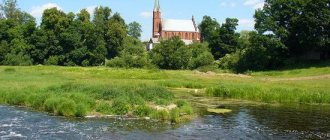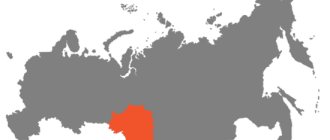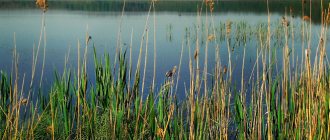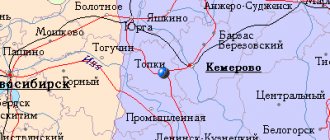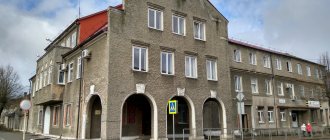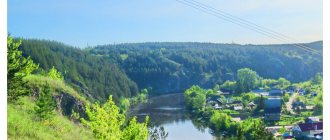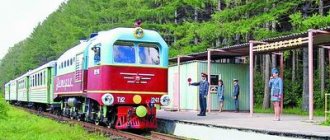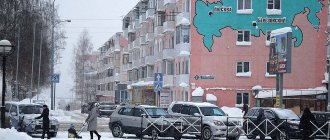Krasnoslobodsk
(Volgograd region)
OKATO code:
18251507
Founded: Urban settlement since:
1938
City since:
1955 City of district subordination (Sredneakhtubinsky district, Volgograd region)
The city was formerly called:
| Krasnaya Sloboda | 1955 |
Deviation from Moscow time, hours:
0
Geographic latitude:
48°42′
Geographic longitude:
44°34′
Altitude above sea level, meters:
0 Sunrise and sunset times of the Sun and Moon in the city of Krasnoslobodsk
Administrative and municipal status[edit]
In the administrative-territorial division, it, together with three rural settlements, is included in the Sredneakhtubinsky district as the city of regional significance of Krasnoslobodsk
.
[1] As a municipal entity, the territory of Krasnoslobodsk and two rural settlements are included in the Sredneakhtubinsky municipal district as the urban settlement of Krasnoslobodsk
.
[4] The remaining rural area (the hamlet
of Sakharny) is included as part of the Frunzensky rural settlement in the Sredneakhtubinsky municipal district. [4]
Map
| Krasnoslobodsk: maps |
Krasnoslobodsk: photo from space (Google Maps) Krasnoslobodsk: photo from space (Microsoft Virtual Earth)
| Krasnoslobodsk. Nearest cities. Distances in km. on the map (in brackets along roads) + direction. Using the hyperlink in the distance , you can get the route (information courtesy of the AutoTransInfo website) | |||
| 1 | Volgograd | 4 (60) | Z |
| 2 | Settlement | 12 (12) | NW |
| 3 | Volzhsky | 17 (32) | NE |
| 4 | Srednyaya Akhtuba | 22 (20) | IN |
| 5 | Erzovka | 26 (38) | WITH |
| 6 | Svetly Yar | 29 (58) | SE |
| 7 | New Rohachik | 37 (44) | Z |
| 8 | Dubovka | 43 (113) | NE |
| 9 | Leninsk | 46 (78) | Z |
| 10 | Kalach-on-Don | 75 (140) | Z |
| 11 | Ilovlya | 79 (90) | NW |
| 12 | Malye Derbets (Republic of Kalmykia) | 83 () | YU |
| 13 | Znamensk | 86 (123) | IN |
| 14 | Kapustin Yar (Astrakhan region) | 88 () | IN |
| 15 | Sadovoye (Republic of Kalmykia) | 103 (123) | YU |
| 16 | October | 106 (163) | SW |
| 17 | Bolshoi Tsaryn (Republic of Kalmykia) | 114 (173) | SE |
a brief description of
Located on the left bank of the Volga opposite Volgograd, 5 km from the railway. Volgograd-I station. Highway.
Territory (sq. km): 104
Information about the city of Krasnoslobodsk on the Russian Wikipedia site
Historical sketch
The Bakatin farmstead, named after the first settler, was renamed the Krasnaya Sloboda village after 1917.
Since 1938, the working village of Krasnaya Sloboda. Since 1955 the city of Krasnoslobodsk.
Economy
Factories: shipbuilding and ship repair, fishing.
Culture, science, education
Experimental station of the Institute of Plant Growing.
Museum of Local Lore.
| Population by year (thousands of inhabitants) | |||||||
| 1939 | 15.6 | 1996 | 13.1 | 2007 | 14.6 | 2015 | 17.0 |
| 1959 | 19.0 | 1998 | 13.3 | 2008 | 14.6 | 2016 | 17.4 |
| 1967 | 19 | 2000 | 13.3 | 2010 | 14.5 | 2017 | 17.4 |
| 1970 | 17.7 | 2001 | 13.3 | 2011 | 16.0 | 2018 | 17.3 |
| 1979 | 16.0 | 2003 | 14.4 | 2012 | 16.1 | 2019 | 17.3 |
| 1989 | 13.5 | 2005 | 14.5 | 2013 | 16.4 | 2020 | 17.1 |
| 1992 | 12.9 | 2006 | 14.6 | 2014 | 16.7 | 2021 | 16.8 |
Links[edit]
Notes[edit]
- ^ abcdef State Committee of the Russian Federation on Statistics. Committee of the Russian Federation for Standardization, Metrology and Certification. No. OK 019-95 January 1, 1997 “All-Russian classifier of objects of administrative-territorial division. Code 18 251 507", as amended. changes No. 278 / 2015 dated January 1, 2016. (Goskomstat of the Russian Federation. Committee of the Russian Federation for Standardization, Metrology and Certification. No. OK 019-95 January 1, 1997. Russian classification of administrative divisions) (OKATO).
Code 18 251 507 , as amended by Amendment No. 278/2015 of January 1, 2016). - ^ a b Federal State Statistics Service (2011). “All-Russian Population Census 2010. Volume 1" [All-Russian Population Census 2010, vol. 1]. All-Russian Population Census 2010 [All-Russian Population Census 2010]
. Federal State Statistics Service. - "26. The size of the permanent population of the Russian Federation by municipalities as of January 1, 2022". Federal State Statistics Service. Retrieved January 23, 2022.
- ^ abcde Law No. 1040-OD
- "On the Calculation of Time". Official Internet portal of legal information
. June 3, 2011. Retrieved January 19, 2022. - Post office. Information and computing center of OASU RPO. ( Post office
).
Search for postal service objects ( postal Search for objects
) (in Russian) - ↑
Federal State Statistics Service of Russia (May 21, 2004).
“The population of Russia, the constituent entities of the Russian Federation as part of federal districts, urban settlements, settlements, settlements is 3 thousand or more people” [Population of Russia, its federal districts, federal districts, districts Urban settlements, rural settlements - administrative centers and rural settlements with a population of over 3,000] (XLS). All-Russian Population Census 2002
. - “All-Union Population Census of 1989. The current population of union and autonomous republics, autonomous regions and districts, territories, negative phenomena, urban settlements and rural district centers” [All-Union Population Census of 1989: current population of union and autonomous republics, Autonomous regions and districts , territories, regions, districts, towns and villages performing the functions of district administrative centers. All-Union Population Census of 1989 [All-Union Population Census of 1989]
.
Institute of Demography of the National Research University: Higher School of Economics [Institute of Demography of the National Research University: Higher School of Economics]. 1989 - via Demoscope Weekly
.
An excerpt characterizing Krasnoslobodsk (Volgograd region)
“If it were my custom, I would have caught him and buried him in the ground.” Yes, with an aspen stake. And what he ruined for the people. “We’ll do it all, he won’t walk,” said the old soldier, yawning. The conversation fell silent, the soldiers began to pack up. - See, the stars, passion, are burning! “Tell me, the women have laid out the canvases,” said the soldier, admiring the Milky Way. - This, guys, is for a good year. “We’ll still need some wood.” “You’ll warm your back, but your belly is frozen.” What a miracle. - Oh my God! - Why are you pushing, is the fire about you alone, or what? See... it fell apart. From behind the established silence, the snoring of some who had fallen asleep was heard; the rest turned and warmed themselves, occasionally talking to each other. A friendly, cheerful laugh was heard from the distant fire, about a hundred paces away. “Look, they’re roaring in the fifth company,” said one soldier. – And what a passion for the people! One soldier got up and went to the fifth company. “It’s laughter,” he said, returning. - Two guards have arrived. One is completely frozen, and the other is so courageous, dammit! Songs are playing. - Oh oh? go have a look... - Several soldiers headed towards the fifth company. The fifth company stood near the forest itself. A huge fire burned brightly in the middle of the snow, illuminating the tree branches weighed down with frost. In the middle of the night, soldiers of the fifth company heard footsteps in the snow and the crunching of branches in the forest. “Guys, it’s a witch,” said one soldier. Everyone raised their heads, listened, and out of the forest, into the bright light of the fire, two strangely dressed human figures stepped out, holding each other. These were two Frenchmen hiding in the forest. Hoarsely saying something in a language incomprehensible to the soldiers, they approached the fire. One was taller, wearing an officer's hat, and seemed completely weakened. Approaching the fire, he wanted to sit down, but fell to the ground. The other, small, stocky soldier with a scarf tied around his cheeks, was stronger. He raised his comrade and, pointing to his mouth, said something. The soldiers surrounded the French, laid out an overcoat for the sick man, and brought porridge and vodka to both of them. The weakened French officer was Rambal; tied with a scarf was his orderly Morel. When Morel drank vodka and finished a pot of porridge, he suddenly became painfully cheerful and began to continuously say something to the soldiers who did not understand him. Rambal refused to eat and silently lay on his elbow by the fire, looking at the Russian soldiers with meaningless red eyes. Occasionally he would let out a long groan and then fall silent again. Morel, pointing to his shoulders, convinced the soldiers that it was an officer and that he needed to be warmed up. The Russian officer, who approached the fire, sent to ask the colonel if he would take the French officer to warm him up; and when they returned and said that the colonel had ordered an officer to be brought, Rambal was told to go. He stood up and wanted to walk, but he staggered and would have fallen if the soldier standing next to him had not supported him. - What? You will not? – one soldier said with a mocking wink, turning to Rambal. - Eh, fool! Why are you lying awkwardly! It’s a man, really, a man,” reproaches to the joking soldier were heard from different sides. They surrounded Rambal, lifted him into his arms, grabbed him, and carried him to the hut. Rambal hugged the necks of the soldiers and, when they carried him, spoke plaintively: “Oh, nies braves, oh, mes bons, mes bons amis!” Voila des hommes! oh, mes braves, mes bons amis! [Oh well done! O my good, good friends! Here are the people! Oh my good friends!] - and, like a child, he leaned his head on the shoulder of one soldier. Meanwhile, Morel sat in the best place, surrounded by soldiers. Morel, a short, stocky Frenchman, with bloodshot, watery eyes, tied like a woman's scarf over his cap, was dressed in a woman's fur coat. He, apparently drunk, put his arm around the soldier sitting next to him and sang a French song in a hoarse, intermittent voice. The soldiers held their sides, looking at him. - Come on, come on, teach me how? I'll take over quickly. How?.. - said the joker songwriter, who was hugged by Morel. Vive Henri Quatre, Vive ce roi vaillanti – [Long live Henry the Fourth! Long live this brave king! etc. (French song)] sang Morel, winking his eye. Se diable a quatre... - Vivarika! Vif seruvaru! sit-down... - the soldier repeated, waving his hand and really catching the tune. - Look, clever! Go go go go!.. - rough, joyful laughter rose from different sides. Morel, wincing, laughed too. - Well, go ahead, go ahead! Qui eut le triple talent, De boire, de battre, Et d'etre un vert galant... [Having triple talent, drinking, fighting and being an amiable...] - But it’s also neat. Well, well, Zaletaev!.. “Kyu...” Zaletaev said with effort. “Kyu yu yu...” he drawled, carefully protruding his lips, “letriptala, de bu de ba and detravagala,” he sang. - Hey, it’s important! That's it, guardian! oh... go go go! - Well, do you want to eat more? - Give him some porridge; After all, it won’t be long before he gets enough of hunger. Again they gave him porridge; and Morel, chuckling, began to work on the third pot. Joyful smiles were on all the faces of the young soldiers looking at Morel. The old soldiers, who considered it indecent to engage in such trifles, lay on the other side of the fire, but occasionally, raising themselves on their elbows, they looked at Morel with a smile. “People too,” said one of them, dodging into his overcoat. - And wormwood grows on its root. - Ooh! Lord, Lord! How stellar, passion! Towards the frost... - And everything fell silent. The stars, as if knowing that now no one would see them, played out in the black sky. Now flaring up, now extinguishing, now shuddering, they busily whispered among themselves about something joyful, but mysterious. X The French troops gradually melted away in a mathematically correct progression. And that crossing of the Berezina, about which so much has been written, was only one of the intermediate stages in the destruction of the French army, and not at all a decisive episode of the campaign. If so much has been and is being written about the Berezina, then on the part of the French this happened only because on the broken Berezina Bridge, the disasters that the French army had previously suffered evenly here suddenly grouped together at one moment and into one tragic spectacle that remained in everyone’s memory. On the Russian side, they talked and wrote so much about the Berezina only because, far from the theater of war, in St. Petersburg, a plan was drawn up (by Pfuel) to capture Napoleon in a strategic trap on the Berezina River. Everyone was convinced that everything would actually happen exactly as planned, and therefore insisted that it was the Berezina crossing that destroyed the French. In essence, the results of the Berezinsky crossing were much less disastrous for the French in terms of the loss of guns and prisoners than Krasnoye, as the numbers show. The only significance of the Berezina crossing is that this crossing obviously and undoubtedly proved the falsity of all plans for cutting off and the justice of the only possible course of action demanded by both Kutuzov and all the troops (mass) - only following the enemy. The crowd of Frenchmen fled with an ever-increasing force of speed, with all their energy directed towards achieving their goal. She ran like a wounded animal, and she could not get in the way. This was proven not so much by the construction of the crossing as by the traffic on the bridges. When the bridges were broken, unarmed soldiers, Moscow residents, women and children who were in the French convoy - all, under the influence of the force of inertia, did not give up, but ran forward into the boats, into the frozen water.
2 things to do in Krasnoslobodsk:
- Take a ride along the “Camel” - this is the name of the river mouth located near Krasnoslobodsk. Named after the two-humped animal due to its winding riverbed. This is one of the most beautiful and visited places in Krasnoslobodsk.
- To feel like a resident of Rublyovka, you don’t have to buy a house near Moscow. You can buy real estate in Krasnoslobodsk, or at least live here, because journalists call the city “Volgograd Rublevka”. Why? Because housing prices here increased after the construction of the bridge across the Volga. Although, given how Krasnoslobodsk looks, this nickname sounds like a mockery.
The science
In Krasnoslobodsk there is one of the experimental stations of the All-Russian Institute of Plant Growing named after.
N. I. Vavilov (the official name is the state scientific institution Volgograd Experimental Station of the All-Russian Research Institute of Plant Growing named after N. I. Vavilov of the Russian Academy of Agricultural Sciences, abbreviated as GNU Volgograd Experimental Station VNIIR named after N. I. Vavilov of the Russian Academy of Agricultural Sciences).[ 15] The experimental station was founded in 1932 on the lands of the Volga-Akhtuba floodplain. At the station, vegetable, fruit, berry, grain and fodder crops are kept alive and studied. The main activities of the station are: mobilization of the world's genetic resources through expeditionary collections, exchange of seeds and planting material; maintaining and studying samples of the world collection, their reproduction; carrying out breeding work to create varieties of vegetable and fruit crops (No. 81 in the list of subjects of applications of the State Variety Commission[16]), seed production.[17]
